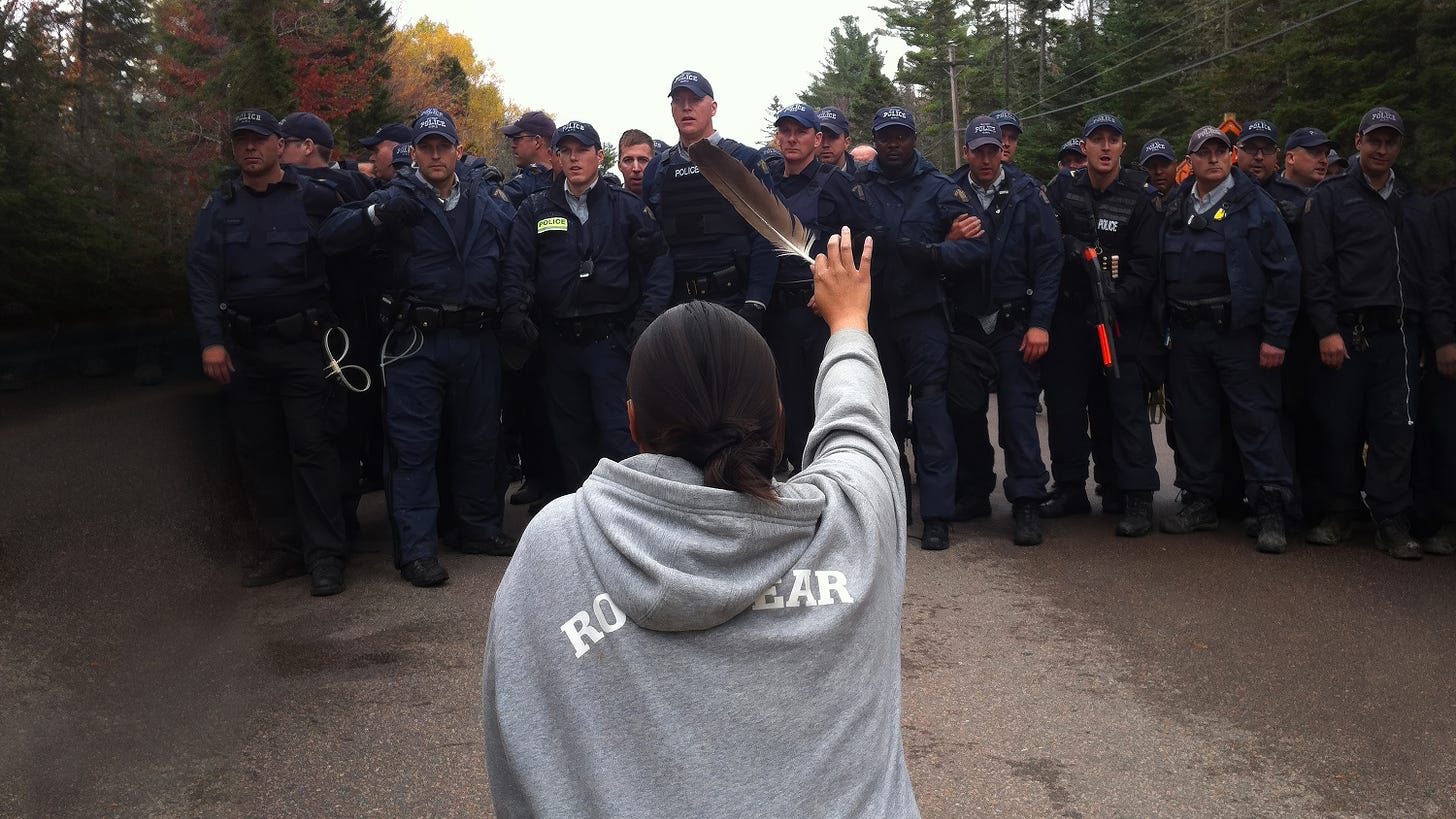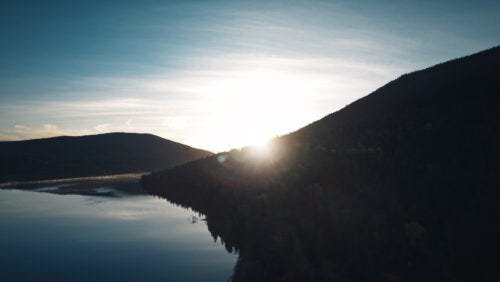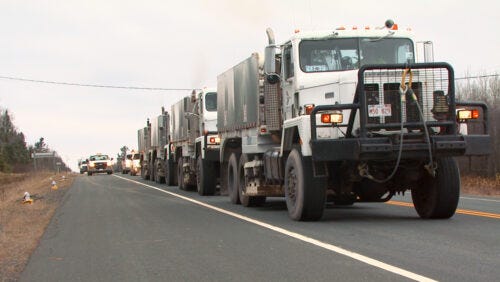Feather Fall documents historic anti-fracking standoff
Told through an Indigenous lens, Feather Fall is a powerful meditation on sovereignty, healing and the strength of collective action.
Water Protector, Amanda Polchies keeps heavily armed RCMP officers at bay Credit: Archival Photo – Ossie Michelin, Courtesy of the National Film Board of Canada, 2025
With the growing pressure for Canada to produce more oil and gas for itself and markets like China — which increasingly means using hydraulic fracturing to extract oil and natural gas from shale rock formations — you need to set aside 23 minutes to watch Feather Fall!
Feather Fall takes Inuk filmmaker and journalist, Ossie Michelin, to Elsipogatog, New Brunswick’s largest First Nations reserve, a decade after he covered peaceful protests to prevent fracking on Mi’kmaqi territory.
The photo Michelin took of Amanda Polchies, kneeling in prayer with an eagle feather in hand before a line of Royal Canadian Mounted Police (RCMP) in riot gear, went viral becoming a symbol of Indigenous resistance that halted fracking exploration on Mi’kmaq unceded lands.
In 2013, Southwestern Energy (SWN), an American fracking company, arrived at the Elsipogtog reserve located on the shores of the Richibucto River. Michelin was sent by Aboriginal Peoples Television Network (APTN) to cover the ensuing protests.
Seven Mi’kmaq districts are located along the east coast with Sikniktuk territory in New Brunswick crossing the Nova Scotia border making it the second-largest of the seven districts.
An entire way of life and and interconnected ecosystems would be lost to fracking Credit: Courtesy of the National Film Board of Canada, 2025
Elsipogtog has ample fresh water sources with residents able to access local springs for drinking water while the Richibucto River provides bass and salmon along with recreational swimming. The land provides moose, deer and medicines. Everything the Mi’kmaq need to live, thrive and keep their culture alive can be found within Elsipogtog. Fracking would place all of that in danger of contamination and destruction.
The fracking fluids used to release the natural gas locked in shale rock pose a real threat to human health, wildlife, the environment and could contaminate ground and surface water sources and that would have destroyed the entire community of Elsipogtog. This is environmental racism in full blown action.
Thumper trucks on the move Credit: Courtesy of the National Film Board of Canada
In September 2013, the community stood in a line, with women at the front and warriors behind, blocking thumper trucks from detecting sources of shale gas. The Land and Water Protectors then erected barricades to block the trucks. The community sought a peaceful resolution that instead was met with SWN resorting to injunctions rather than meaningful consultation.
By October, the RCMP resorted to violent arrests and removed the barricade. That’s when Polchies knelt before militarized RCMP officers holding a single feather. Other women joined her forming a line of strong medicine before Polchies and others were handcuffed, arrested and held in jail. When the Land and Water Protectors were released the peaceful protests continued.
In November 2013, the thumper trucks returned. Land and Water Protectors continued to peacefully block the trucks until the ground froze and that work had to cease.
Perhaps surprisingly, SWN did not return the next year and in December 2014 the province of New Brunswick announced a moratorium on shale gas exploration that’s still in place today.
Amanda Polchies today Credit: Courtesy of the National Film Board of Canada, 2025
Michelin returns a decade later to speak with Polchies and other Land and Water Protectors who still experience post traumatic stress disorder (PTSD), anxiety and long-term affects from the injuries inflicted by militarized RCMP.
The community of Elsipogtog is slowly healing, but they are clear that they will do it again to protect all that is important to them and to ensure their basic human rights and those of the next seven generations.
Feather Fall poster Credit: Courtesy of the National Film Board of Canada, 2025
Watch Feather Fall (2024/23 mins) for free on the NFB website.
Ossie Michelin Credit: NFB
Ossie Michelin is an award-winning Labrador Inuk journalist from North West River. His work focuses on Indigenous worldviews and the North with a capital N. Ossie notably snapped an image the Huffington Post chose as one of the defining pictures of Canada in the 21st century. Grounded in Indigenous perspectives, Ossie’s work has been featured in National Geographic and Inuit Art Quarterly, and on APTN National News and the CBC, among others. His first NFB short, Evan’s Drum (2021), was celebrated from the big screen to the classroom, and beyond.
Watch Evan’s Drum for free on the NFB website. It’s the beautiful story of Amy Winters and her son, Evan, learning to create and play their Inuit drums which had fallen silent for generations throughout Labrador due to colonization.
And, of course, Alanis Obomsawin was one of Ossie’s mentors.
Thanks to everyone who read today’s article. With your financial support, a little Nicoll can make a lot of change.








